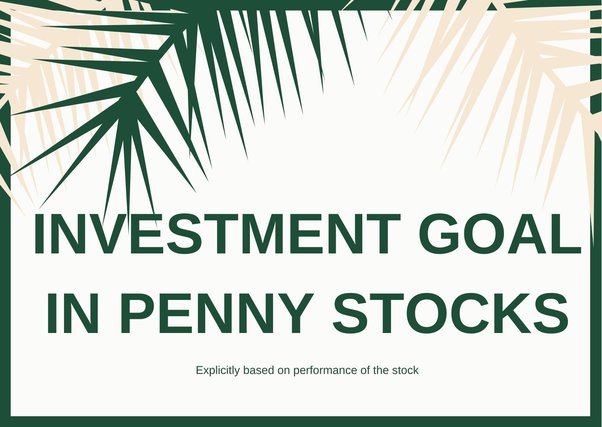
Account aggregators are financial service providers that collect information from various financial institutions. They then provide a single-stop solution for all financial needs. This model helps consumers be included in the banking system. Financial aggregation has been seen as one of the first visible realizations of open banking.
There are many types of financial aggregators available in the market. Some of them specialize in investment data, while others provide lending services. Choosing the right one for your needs involves considering a number of factors. These include your goals and the data you want to share. Financial aggregators can be found in a variety of fields, including loans, wealth management, and startup companies. Some aggregators work peer-to–peer, while some are owned and managed by financial institutions.
The primary benefit of using a financial aggregator is that you can get a detailed overview of your financial situation. This allows you make informed decisions, avoid unnecessary overdrafts, and pay from multiple bank accounts. Agregators also offer integration with other types and data, which makes it easier to access all of your financial information from one place. These services also let you analyze and view your spending habits.

At the moment, the top financial aggregators in America cover over 95% bank accounts. They also have offices in Australia, Canada, and New Zealand. They offer personalized advice and allow customers to move money between accounts. Finicity is the North American's leading financial aggregator. Bankinter, a popular aggregator in the UK, is also a favorite.
Data aggregation was an important aspect of fintech. It allows banks to offer a wider range of services. However, it has also been associated with a number of problems. Some data aggregators have been accused in the past of reporting inaccurate data and locking out accounts. It can also slow the online banking experience.
Data security is another problem that aggregators must address. Best aggregators offer great customer service while ensuring data security. It is ideal that all government agencies and business entities are on the platform. However, the bank will be able to share financial details only if the consumer consents to this.
A programming interface can help you avoid account lockouts or other problems caused by data aggregators. This is the best way to get data from banks. An API can also handle data requests much better than a website-based interface. This allows aggregators and consumers to get accurate data without having to slow down their websites. Another advantage is that customers can deny access to their data. In some cases banks may also have their internal API.

Many financial aggregators have been able secure capital as the industry expands. This has led to media attention. Many startups have specialized in this field. Some of these startups have already received investment and others are just getting started.
FAQ
Which investment vehicle is best?
Two options exist when it is time to invest: stocks and bonds.
Stocks can be used to own shares in companies. Stocks are more profitable than bonds because they pay interest monthly, rather than annually.
You should invest in stocks if your goal is to quickly accumulate wealth.
Bonds are safer investments, but yield lower returns.
There are many other types and types of investments.
They include real property, precious metals as well art and collectibles.
How do I begin investing and growing my money?
It is important to learn how to invest smartly. This will help you avoid losing all your hard earned savings.
Learn how to grow your food. It's not as difficult as it may seem. You can easily plant enough vegetables for you and your family with the right tools.
You don't need much space either. Just make sure that you have plenty of sunlight. Consider planting flowers around your home. They are easy to maintain and add beauty to any house.
You can save money by buying used goods instead of new items. Used goods usually cost less, and they often last longer too.
Is it really worth investing in gold?
Since ancient times, the gold coin has been popular. It has been a valuable asset throughout history.
Like all commodities, the price of gold fluctuates over time. If the price increases, you will earn a profit. A loss will occur if the price goes down.
It all boils down to timing, no matter how you decide whether or not to invest.
What can I do with my 401k?
401Ks offer great opportunities for investment. Unfortunately, not everyone can access them.
Most employers offer their employees two choices: leave their money in the company's plans or put it into a traditional IRA.
This means you can only invest the amount your employer matches.
You'll also owe penalties and taxes if you take it early.
What are the 4 types?
There are four types of investments: equity, cash, real estate and debt.
You are required to repay debts at a later point. It is used to finance large-scale projects such as factories and homes. Equity can be described as when you buy shares of a company. Real Estate is where you own land or buildings. Cash is what you have now.
You can become part-owner of the business by investing in stocks, bonds and mutual funds. You are a part of the profits as well as the losses.
What can I do to increase my wealth?
You must have a plan for what you will do with the money. How can you expect to make money if your goals are not clear?
Also, you need to make sure that income comes from multiple sources. So if one source fails you can easily find another.
Money does not just appear by chance. It takes planning and hardwork. Plan ahead to reap the benefits later.
How long does it take for you to be financially independent?
It depends on many variables. Some people are financially independent in a matter of days. Some people take many years to achieve this goal. It doesn't matter how long it takes to reach that point, you will always be able to say, "I am financially independent."
It's important to keep working towards this goal until you reach it.
Statistics
- Some traders typically risk 2-5% of their capital based on any particular trade. (investopedia.com)
- 0.25% management fee $0 $500 Free career counseling plus loan discounts with a qualifying deposit Up to 1 year of free management with a qualifying deposit Get a $50 customer bonus when you fund your first taxable Investment Account (nerdwallet.com)
- As a general rule of thumb, you want to aim to invest a total of 10% to 15% of your income each year for retirement — your employer match counts toward that goal. (nerdwallet.com)
- Over time, the index has returned about 10 percent annually. (bankrate.com)
External Links
How To
How to save money properly so you can retire early
Planning for retirement is the process of preparing your finances so that you can live comfortably after you retire. It is the time you plan how much money to save up for retirement (usually 65). You also need to think about how much you'd like to spend when you retire. This covers things such as hobbies and healthcare costs.
You don't always have to do all the work. A variety of financial professionals can help you decide which type of savings strategy is right for you. They will assess your goals and your current circumstances to help you determine the best savings strategy for you.
There are two main types, traditional and Roth, of retirement plans. Roth plans allow for you to save post-tax money, while traditional retirement plans rely on pre-tax dollars. Your preference will determine whether you prefer lower taxes now or later.
Traditional Retirement Plans
You can contribute pretax income to a traditional IRA. Contributions can be made until you turn 59 1/2 if you are under 50. After that, you must start withdrawing funds if you want to keep contributing. The account can be closed once you turn 70 1/2.
If you already have started saving, you may be eligible to receive a pension. These pensions vary depending on where you work. Some employers offer matching programs that match employee contributions dollar for dollar. Others provide defined benefit plans that guarantee a certain amount of monthly payments.
Roth Retirement Plans
Roth IRAs allow you to pay taxes before depositing money. When you reach retirement age, you are able to withdraw earnings tax-free. However, there are some limitations. For example, you cannot take withdrawals for medical expenses.
A 401(k), or another type, is another retirement plan. Employers often offer these benefits through payroll deductions. These benefits are often offered to employees through payroll deductions.
401(k), plans
Many employers offer 401k plans. They let you deposit money into a company account. Your employer will automatically contribute a portion of every paycheck.
The money you have will continue to grow and you control how it's distributed when you retire. Many people prefer to take their entire sum at once. Others spread out distributions over their lifetime.
Other types of savings accounts
Some companies offer other types of savings accounts. TD Ameritrade can help you open a ShareBuilderAccount. With this account, you can invest in stocks, ETFs, mutual funds, and more. You can also earn interest for all balances.
Ally Bank can open a MySavings Account. Through this account, you can deposit cash, checks, debit cards, and credit cards. You can also transfer money to other accounts or withdraw money from an outside source.
What next?
Once you have decided which savings plan is best for you, you can start investing. Find a reputable firm to invest your money. Ask friends and family about their experiences working with reputable investment firms. Check out reviews online to find out more about companies.
Next, decide how much to save. This is the step that determines your net worth. Your net worth includes assets such your home, investments, or retirement accounts. It also includes debts such as those owed to creditors.
Once you know how much money you have, divide that number by 25. That number represents the amount you need to save every month from achieving your goal.
If your net worth is $100,000, and you plan to retire at 65, then you will need to save $4,000 each year.